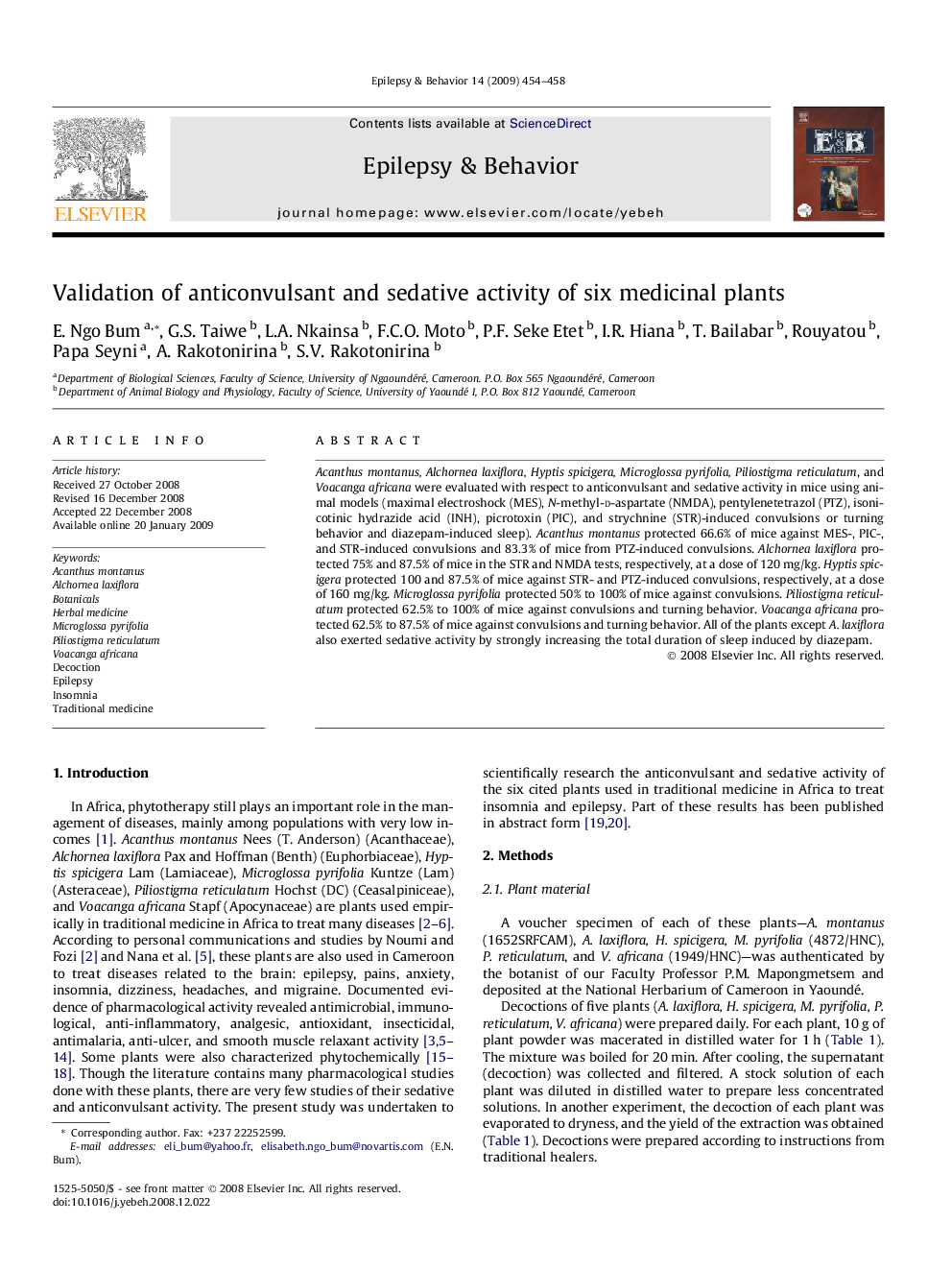| Article ID | Journal | Published Year | Pages | File Type |
|---|---|---|---|---|
| 3050475 | Epilepsy & Behavior | 2009 | 5 Pages |
Acanthus montanus, Alchornea laxiflora, Hyptis spicigera, Microglossa pyrifolia, Piliostigma reticulatum, and Voacanga africana were evaluated with respect to anticonvulsant and sedative activity in mice using animal models (maximal electroshock (MES), N-methyl-d-aspartate (NMDA), pentylenetetrazol (PTZ), isonicotinic hydrazide acid (INH), picrotoxin (PIC), and strychnine (STR)-induced convulsions or turning behavior and diazepam-induced sleep). Acanthus montanus protected 66.6% of mice against MES-, PIC-, and STR-induced convulsions and 83.3% of mice from PTZ-induced convulsions. Alchornea laxiflora protected 75% and 87.5% of mice in the STR and NMDA tests, respectively, at a dose of 120 mg/kg. Hyptis spicigera protected 100 and 87.5% of mice against STR- and PTZ-induced convulsions, respectively, at a dose of 160 mg/kg. Microglossa pyrifolia protected 50% to 100% of mice against convulsions. Piliostigma reticulatum protected 62.5% to 100% of mice against convulsions and turning behavior. Voacanga africana protected 62.5% to 87.5% of mice against convulsions and turning behavior. All of the plants except A. laxiflora also exerted sedative activity by strongly increasing the total duration of sleep induced by diazepam.
